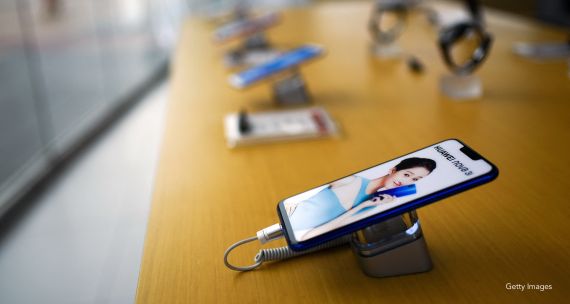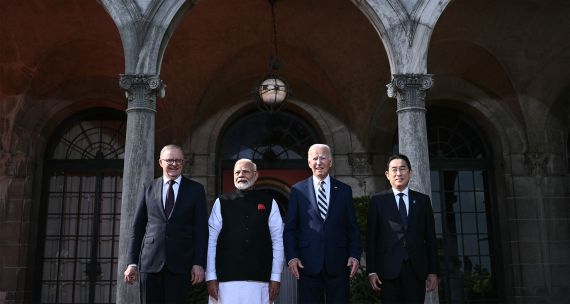The Takeaway
A massive three-way train collision in the east Indian state of Odisha on June 2 underscores the crumbling state of Indian Railways, the body tasked with operating the country’s national railway system. Massively congested rail lines, bureaucratic negligence, and a lack of maintenance and proper planning plague the severely understaffed railway ministry. The government has been called upon to prioritize passenger safety — particularly through the enhancement of existing railway infrastructure — and real-time rescue and recovery efforts, as well as attracting investment, to improve Indian Railways.
In Brief
On June 2, three trains collided in the Balasore district of Odisha. The Coromandel Express, a passenger train, entered a passing loop instead of the main line near Bahanaga Bazar railway station. Moving at full speed, it collided with a goods train, derailing 21 passenger coaches. Three of those coaches then collided with another oncoming passenger train, the SMVT Bengaluru–Howrah SF Express, on the adjacent track. The accident resulted in 288 deaths and left more than 1,100 individuals injured, making it one of India’s deadliest train crashes in two decades. In a preliminary report, India’s railway board said an electronic signalling failure caused the collision. A more detailed report from the Chief Commissioner of Railway Safety is underway.
Implications
India boasts one of the world’s largest railway systems. Trains carry about 25 million passengers every day across 100,000 kilometres of track. According to the Commission of Railway Safety, in 2019-20, derailments made up 70 per cent of all railway accidents in India, and a majority of those derailments involved passenger trains. Most of the derailments were caused by poor track maintenance, alongside poor driving, speeding, and other mechanical reasons. In 2022, India announced the development of an automatic train protection system called “Kavach” to prevent train collisions. However, more than 97 per cent of Indian Railways’ routes are yet to be covered under this inexpensive system.
The June 2 crash also highlighted the limitations of Odisha’s relief and rescue infrastructure as authorities took over 30 minutes to arrive and even longer to set up rescue operations. Local villagers, jumping into action, rushed onto the scene as first responders and provided essential first aid and medical supplies in the absence of official assistance. Understandably, the incident has shaken the public’s confidence in India’s transportation infrastructure.
The collision also has implications for domestic and foreign investment in India’s railway sector. In 2014, the Union Cabinet of India raised the composite cap (i.e. simplification by removal of sub-ceilings) for foreign direct investment (FDI) in certain sub-sectors of the Indian railway to 100 per cent, including dedicated freight lines, high-speed trains, and connections between mines and ports. FDI is also permitted in specific projects, including the construction of new railway lines, expansion of existing lines, and maintenance projects through public-private partnerships. In the case of joint ventures related to projects, FDI of up to 74 per cent is permitted. The FDI relaxation for the railway sector has re-opened a huge investment corridor for Canada while addressing the Indian Railways’ development needs. Canada’s Bombardier Transportation established a presence in India’s railway sector in 2020 with metro rail work, and it continues to be a major market player even after its acquisition by France’s Alstom in 2021.
What’s Next
-
Bureaucratic oversight
In the Union Budget of 2023-24, the Indian government allocated a record C$38.9 billion (2.4 trillion Indian rupees) to Indian Railways. However, the budget places little emphasis on fixing pre-existing infrastructure, especially train collision prevention technology that could have averted the Odisha crisis. A 2017-21 performance review of Indian Railways derailments highlighted shortfalls in structural inspections, a shortage of track maintenance staff, non-response to audits, and the use of funds for non-priority works. The Indian parliament has yet to formally discuss the report. The recent train collision, however, could prompt the government to reconsider its priorities in the railway sector.
-
The state of Indian Railways
In May 2023, Indian Prime Minister Narendra Modi inaugurated railway projects worth around C$1.3 billion (80 billion Indian rupees) in Odisha, including new rail lines. But the budget doesn’t specifically mention improvements to address issues in older train lines, which remain overused, clogged, and understaffed. India has witnessed at least three major train accidents over the last decade. Meanwhile, the Indian government’s National Rail Plan, announced in 2022, aims to transform the country’s railway system by 2030, and requires a C$271-billion (16.7 trillion Indian rupees) investment over the next decade.
-
Public health infrastructure needs in India
A critical aspect of the Odisha incident is the passengers on the train; The Coromandel Express is colloquially known as the “Hospital Express” and transports hundreds of passengers daily from West Bengal to the southern state of Tamil Nadu for medical treatment. South Indian states not only have stronger economies within India but also a better record for the distribution of state welfare, more advanced health-care infrastructure, and higher quality patient care. Beyond the immediate tragedy, the incident points to a broader need for public health infrastructure in states like West Bengal and Odisha.
• Produced by CAST's South Asia team: Dr. Sreyoshi Dey (Program Manager); Prerana Das (Analyst); Suyesha Dutta (Analyst); and Silvia Rozario (Analyst).




